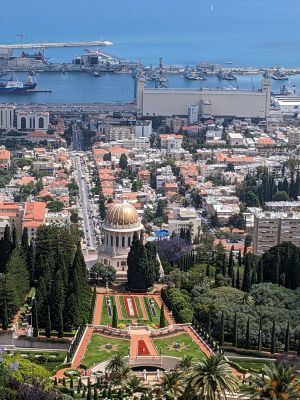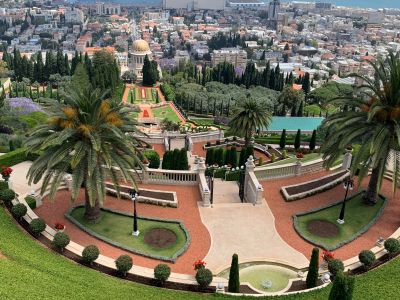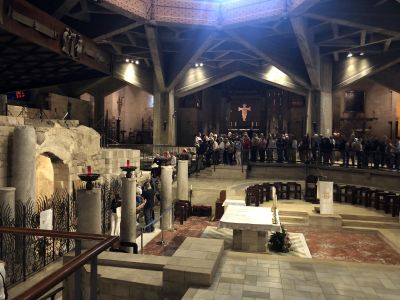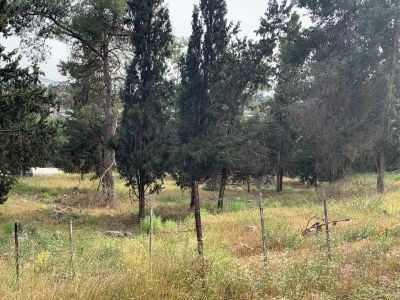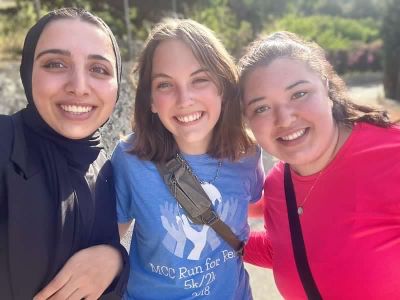“Differences of Identity”
Luisa Dutchersmith
As we loaded onto a big tour bus and started our drive from Bethlehem north towards the Galilee, I could tell that this part of our trip was going to be different. We had spent the last two and a half weeks learning and sharing with Palestinians and trying to be very conscious of our roles as visitors and outsiders. We had made many connections with people in Bethlehem and were starting to feel comfortable with our routine there, but now it felt like we were leaving that behind to be “tourists” in Israel.
After traveling for a few hours and stopping in Haifa to walk along the Mediterranean Sea and view the Bahai Gardens, we reached Nazareth where we would be staying for the next few days. Though we had a variety of activities, it felt like the majority of our time was spent visiting important biblical archeological sites and Christian churches. We were with a Christian tour company, and we were hearing a different narrative and perspective than we had during our time in Palestine, even though our guide was Palestinian. As our guide took us to each site, he told us biblical and Christian histories without bringing up issues related to Israeli occupation, political conflicts, or struggles of Palestinian people, all of which had been very present during tours and conversations in other locations.
The change in conversation made me think about the many differences that exist between the lives of Palestinians living in occupied territories and the ones that live in Israel who also have Israeli citizenship. While some Palestinians we talked to in the Galilee did talk about conflicts of identity, it was evident that occupation, violence, or displacement were not as constantly on their minds, or perhaps not in the same way as for inhabitants in the West Bank. These ‘Israeli Palestinians’ (though not all would use the name) usually have the freedom to travel to their holy sites and use the airport in Tel Aviv, as well as other privileges that come with Israeli citizenship. However, these Palestinians face many challenges as well by living in a country where they are made to constantly feel unwanted and do not have all of the same opportunities and legal statuses that other Israelis have.
One of our site visits in the Galilee especially brought these differences to mind for me. We went to Sepphoris, a site that had been a Palestinian village until it was destroyed completely and transformed into an archaeological museum and park. We went to Sepphoris with Nadia, a Palestinian with Israeli citizenship whose family had once lived near this village. As we walked around the land where she had played as a child, she talked about the pain that the destruction had caused her family and how wrong the Israeli government’s actions had been. However, she did not end there. She also talked about how she had gotten to know the Israelis that lived on the land that had belonged to her grandparents, and how she had come to see them as friends, despite the tension of them inviting her into what had been her family’s home. The story she shared shows a bit of the complexities of identities that Palestinians living in Israel face. While she will always feel the pain and hurt caused by the Israeli government, Nadia also lives in community with Jewish Israelis and sees them as her neighbors and friends.
While I felt like I learned more from all of our lectures and conversations with locals during our time in Bethlehem, looking back I also see how our time in the Galilee demonstrated some of the complex parts of conflict and occupation that I was not able to see before. I saw the complex identity that Palestinians with Israeli citizenship hold, and how they feel like they are part of two groups and neither at the same time. It felt like I was able to peel back one more layer of the complexities of the identities of the people we got to know.





